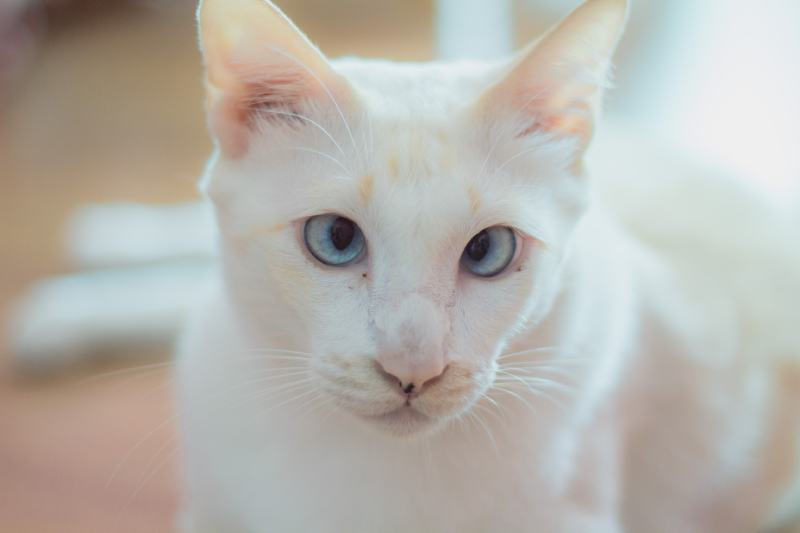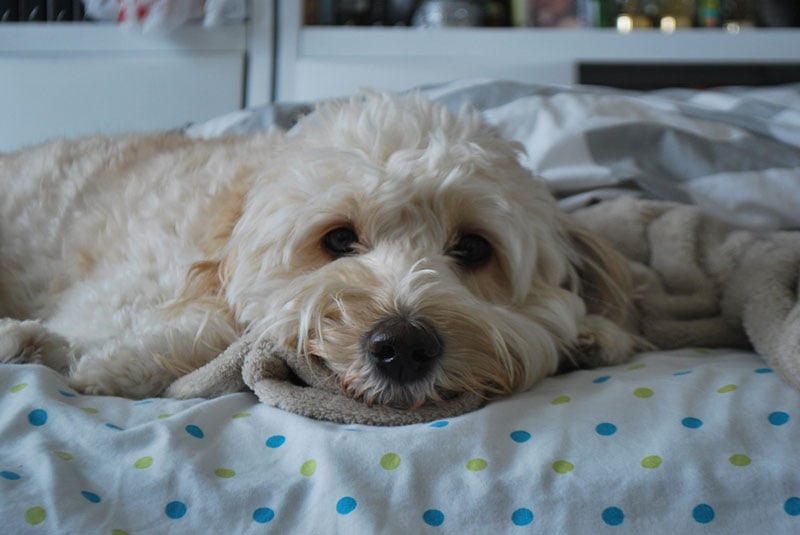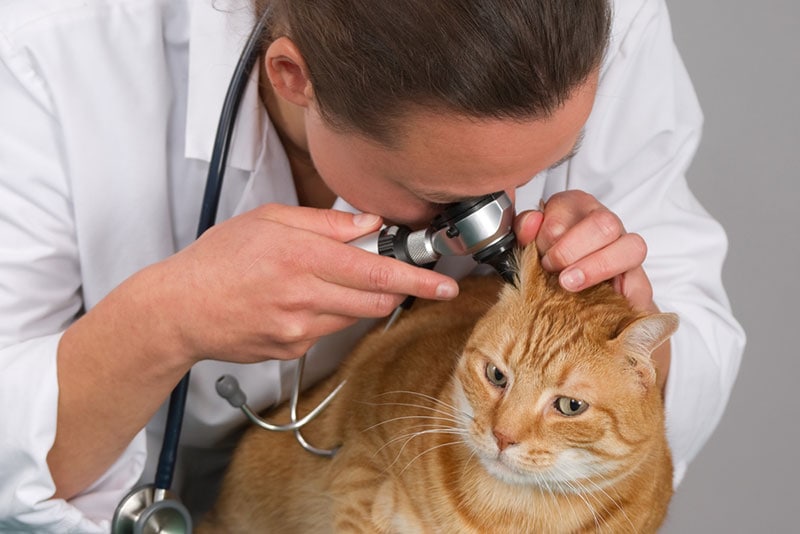How Do Rabbits Sleep? Our Vet Explains
Updated on
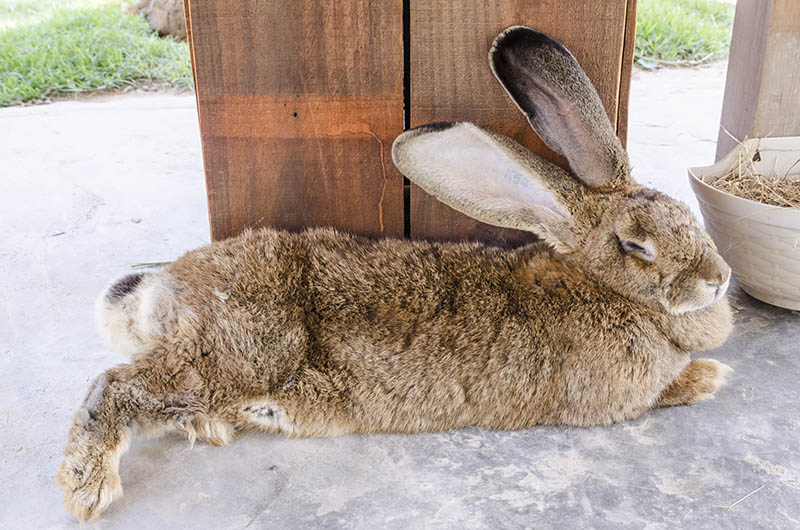
Bunnies need their sleep as much as we do. On average, an adult rabbit gets 8–11 hours of shut-eye. But you’ll never catch them catching z’s on their back. Instead, rabbits only sleep on their stomach, flopping, sitting, or semi-sitting. In the wild, these tiny balls of fur have to always keep their guard up, and that’s where these sleeping habits come from.
But wait: does that mean they skip daytime to go out and are active at night? Not quite—rabbits are crepuscular creatures! For a first-time bunny owner, this can be a bit confusing. What’s the best way to tell if they’re asleep or not? How do you keep the pet safe and comfy? Do bunnies dream? Read on to find out!
Rabbits and Their Sleeping Habits
Most people feel like they can only get proper rest if they sleep in the same bed and at the same time. Well, that’s not the case with rabbits! They can fall asleep pretty much anywhere as long as that spot is safe, relatively soft, and a bit dark. Wild bunnies often snooze in burrows (dug out “bunkers”). If they find a similar setup indoors (a dimly lit, cushy area), best believe they’ll fancy it over other spots in the house.
But that’s not even the most important part here. The one thing to always keep in mind is that rabbits don’t only sleep during the day, but also during the night. In contrast to most creatures, bunnies are crepuscular beings and prefer to have multiple “sleep sessions” of varying lengths in 24 hours instead of one or two. Here’s how it works:
- Rabbits sleep throughout the day and night alike, although they do sleep less throughout the night and experience less paradoxical sleep or REM phase.
- A stressed-out rabbit may wake up frequently, reducing the length and quality of their sleep, which may have harmful effects on their health
- They mostly get busy at dawn and dusk when the sun sits below the horizon (at 4–7 AM and 6–9 PM)
- Pet bunnies go back to sleep when it’s really dark outside (usually, from 8–9 PM to 4–5 AM)
- Rabbits are quiet and not consistently active during most of the day
- They complete most of their eating, and mating duties when visibility is low, but when food is readily available and the environment is safe (pet rabbits), they will eat throughout the day and night
- This is dictated by the necessity to avoid predators.
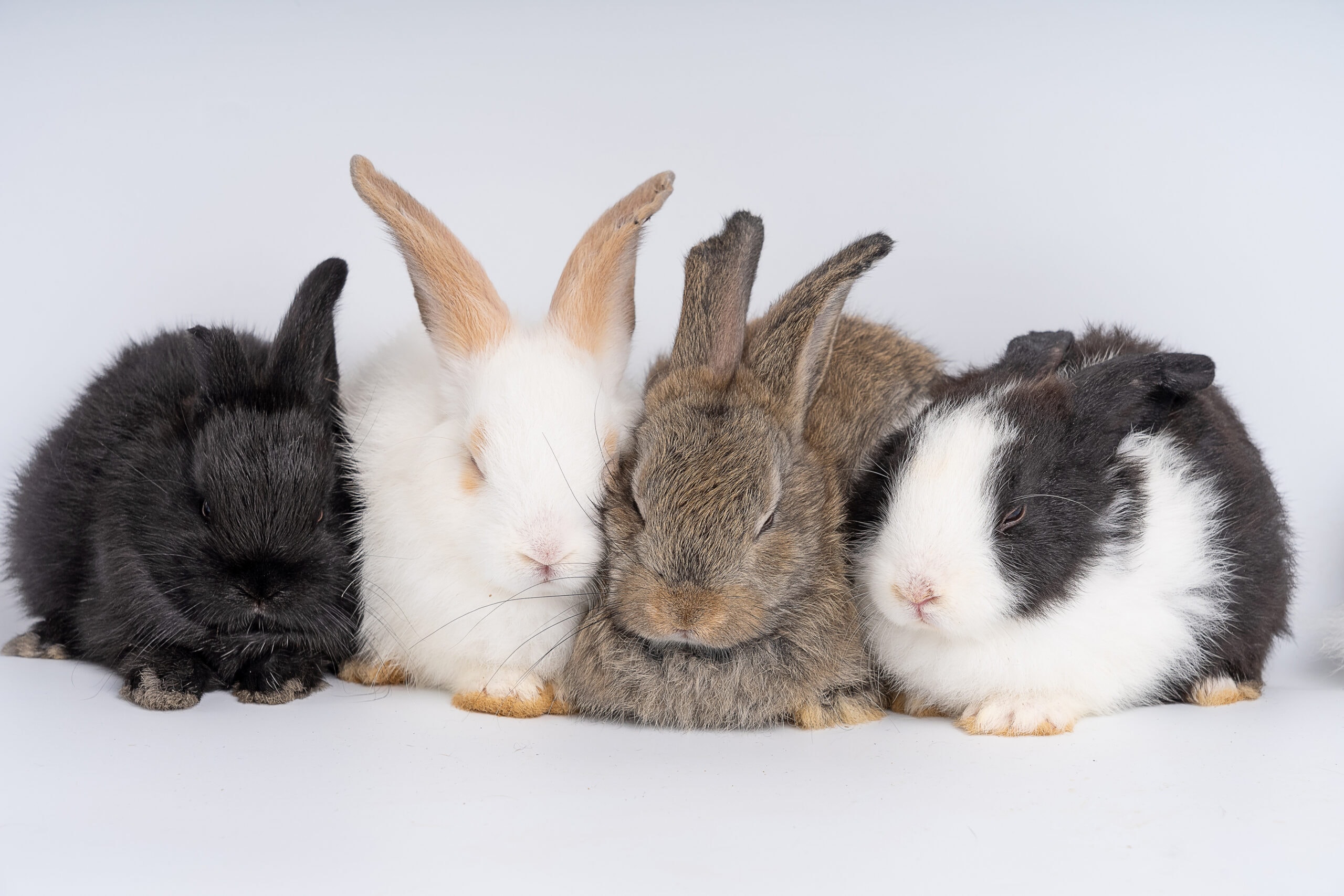
The Light Phase vs Deep Phase and REM
Similar to humans, rabbits have different phases of sleep1. There is a state called drowsy that can be distinguished from wakefulness, slow-wave (or light) sleep, and paradoxical sleep or REM phase. The drowsy state always occurs at sleep onset or following REM termination and accounts for 6.3% of the time during a 24-hour period and one-quarter of total sleep time.
Around 65% of sleep time is slow wave sleep, while 9.6% is REM phase.
During the light phase, bunnies keep most of their senses on high alert mode. The deep phase, in turn, makes them more vulnerable and results in more rest.
And one more thing: scientists suspect that buns have dreams, yet they only occur in the REM phase. Further research is required into this topic. During the REM phase, there is fast EEG activity in the motor cortex, with rapid eye movements and phasic activity of the facial and limb musculature. While there’s no telling exactly what these pets dream about, most likely, it’s the things they’ve experienced throughout the day. Or it could be a safe, familiar space. But of course, this is just harmless guessing. Sometimes, rabbits squirm and twirl, maybe as a consequence of having intense dreams: that’s completely normal.
How Much Sleep Do Bunnies Need?
For the most part, 6-12 hours of sleep on average per day is enough for them to live healthy, happy lives. However, many rabbits prefer to spend as much as 10–11 hours snatching forty winks. It all comes down to the breed, daily activity, diet, susceptibility to stress, environmental factors, and individual characteristics of the bunny. Also, pet rabbits are generally more relaxed, so they sleep more compared to wild buns.
In any case, be cautious if your ball of fur suddenly starts to spend a little bit more/less time sleeping. This can be caused by a change of season, scenery, the rabbit’s mood, health issues or something else. Just don’t try to wake up a sleeping rabbit, as it will just cause unnecessary stress. However, if your rabbit is sleeping more than normal or is also showing signs of lethargy, reduced appetite, diarrhea, or reduced defecation, they are ill and need to be checked out straight away. Familiarize yourself with your rabbit’s sleeping patterns and activity levels so you can recognize illness promptly.

Is Your Rabbit Asleep? Let’s Check!
If you’re new to owning a rabbit, it won’t be easy to figure out if they’re dozing off or not. Thankfully, it’s not too hard to tell if you know what to look at. Here are the most common signs:
- Ears are down. When the rabbit is active, their ears are active, moving, twitching, and usually up and erect most of the time. That allows them to stay alert and one step ahead of the predators. So, when the ears are relaxed, not perked, are moving much less frequently, and are down, that usually means the pet is sleeping. Or, at the very least, they’re getting ready to take a long nap.
- Slow breathing. Bunnies slow their breathing down when slumbering (our bodies do the same, by the way). Since their activity level is greatly reduced, the lungs don’t have to work as fast.
- Lack of movement. Rabbits are active, energetic creatures. Even if they’re sitting in the corner peacefully, certain parts of their bodies still move. A great example of that is the twitching nose. But you won’t see any of that in a sleeping rabbit (unless they’re having a dream), although the nose may still twitch, at a slower rate and not as often, and the nose movements can be completely absent. The teeth do chatter sometimes, though.
- Sleeping positions. Some bunnies prefer to sleep on their side (flop); others like how it feels to lie on their stomachs. And then there are the sitting (loaf) and semi-sitting “stances” (sprawl). If you catch your furry bud in one of these positions, we bet it’s wandered off into the Dreamland.
A quick note: rabbits NEVER sleep on their backs, as that would leave their bellies vulnerable to predator attacks. Even the side positions aren’t ideal, as they leave rabbits exposed to a potential onslaught. Only a relaxed bunny will sleep like that. That’s why most bunnies prefer the sitting and semi-sitting positions.
Do Bunnies Really Sleep With Their Eyes Open?
In the wilderness, a rabbit is a prey species, not a predator: they have to always be vigilant, even when taking a nap. But Mother Nature gifted them with wide-angle vision, hearing capabilities, and a sense of smell. The large ears can hear danger coming from afar. Also, rabbits easily catch strange odors even when munching away because they only breathe through their noses, not their mouths.
So, a rabbit that seems to be fully focused on their food is aware of its surroundings. As for their eyes, they provide a wide-angle vision. Well, almost: there’s still a blind spot right in front of their face. More importantly, when bunnies sleep, they may keep their eyes open. These fascinating animals have a clear third eyelid (the nictitating membrane) that does all the blinking to prevent the eyes from going dry and closes when the rabbit is sleeping.
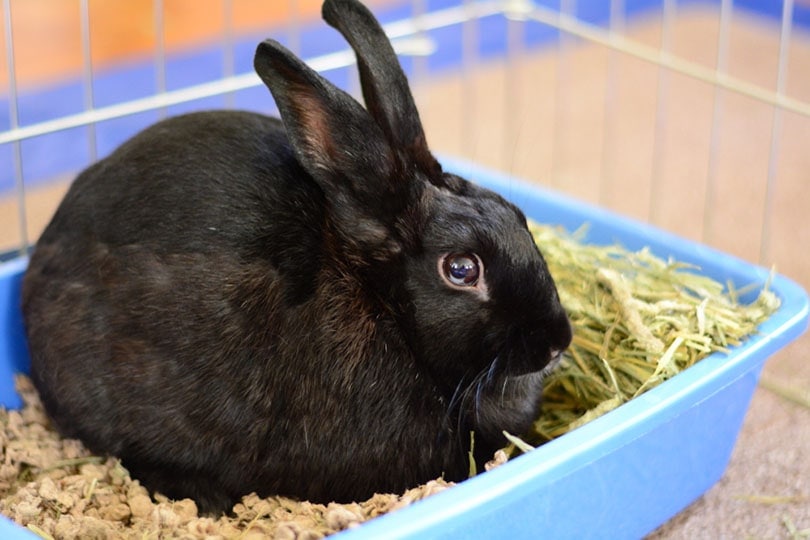
Are They Susceptible to External Stimuli?
Rabbits are extremely sensitive to the slightest changes in temperature and lighting, along with various noises and movements. Without these heightened senses, they simply can’t survive in the wild. That said, bunnies don’t always keep that third eyelid open. When they fall asleep in safe environments, the outer eyelids do close. As the owner, you should take pride in creating the perfect conditions for your furry pet to sleep in!
Ideal Sleeping Conditions for a Rabbit: A Quick Guide
Bunnies prefer to sleep on soft, cozy non-slip surfaces, like stacked-up hay, or other comfortable bedding such as a vet bed. They also appreciate their resting area and living space to resemble a burrow so they feel safe and secure at all times. Also, to keep the rabbit comfortable, make sure their resting place has at least one entrance, or it can have an entrance and an exit. This way, the pet will be able to fully relax.
A rabbit house is perfect for this. It has an entrance and an exit, and a comfortable mat at the bottom. Or you can invest in a rabbit-special bed. Every bun is different, though. Some prefer to sleep in tunnels that look like burrows. Others get cozy on a pillow or a mattress. Give them space and let the pet choose the “chambers” instead of forcing their decision.
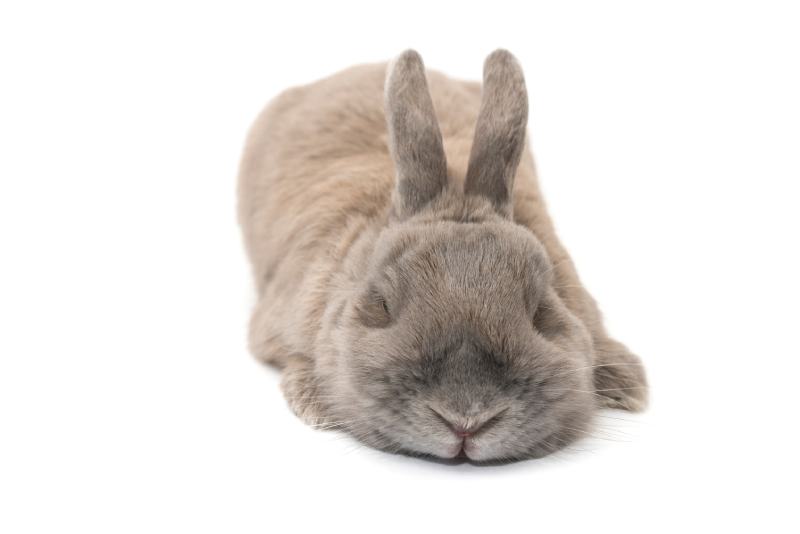
How Do You Feed a Bunny and Keep It Healthy?
Bunnies mostly chew on grass hay—that’s their favorite snack and the most important part of their diet. The list includes Timothy, Oaten, Wheaten, Pasture, Paddock, Meadow or Ryegrass. Grass hay contains fiber and all the nutrients your rabbit needs to keep them healthy and well-fed. Hay should make up 80-90% of their daily food intake. It has a crucial role in maintaining a healthy digestive function, plus it helps the teeth stay in proper shape. So, make sure your pet bunny has fresh hay offered at all times in unlimited amounts.
We recommend feeding the rabbit one of the different types of hay listed above. Don’t give them any legume hay unless they are pregnant, nursing, or growing: it’s not good for a rabbit’s health as it contains a higher amount of protein and calcium. The same goes for the straw. Pellets are allowed, but only in small portions, making up around 5% of their daily diet. Green leafy foods (broccoli, parsley, asparagus, and lettuce, to name a few) are also important and should make up for around 10% of their total daily food intake. They’re nutrient-rich and contain water.
Lastly, fruits and other veggies (like carrots and cherries without stems and seeds) should be used as treats in moderation, and make up 10% of daily food intake, together with other veg.
This doesn’t mean rabbits are omnivorous creatures, though. They’re strict herbivores! Here’s a list of foods that you should NOT feed to a pet bunny:
- Cookies and sugar
- Nuts and peas
- Bread and cereals
- Beans and corn
- Seeds, wheat, and oats
 Conclusion
Conclusion
Tiny, affectionate, and incredibly cute, rabbits are fun to have around. But don’t be fooled, they require a lot of dedication and care. When they’re well-socialized, they can make a great companion for the right home. However, just like any other pet, bunnies have specific needs that you, as the owner, have to meet to keep them happy. For example, most humans feel great after 7–8 hours of sleep.
However, rabbits need up to 11 hours of sleep. That’s why it’s so important to know their sleeping habits. A bunny that’s forced to sleep in less-than-ideal conditions, by being exposed to poor environmental conditions with noise, other animals, or lack of safety, will be stressed and anxious. This will lead to illness. So, use the tips and tricks from our guide to create the right environment for your furry bud and make it feel at home!
Featured Image Credit: hacksss, Shutterstock



